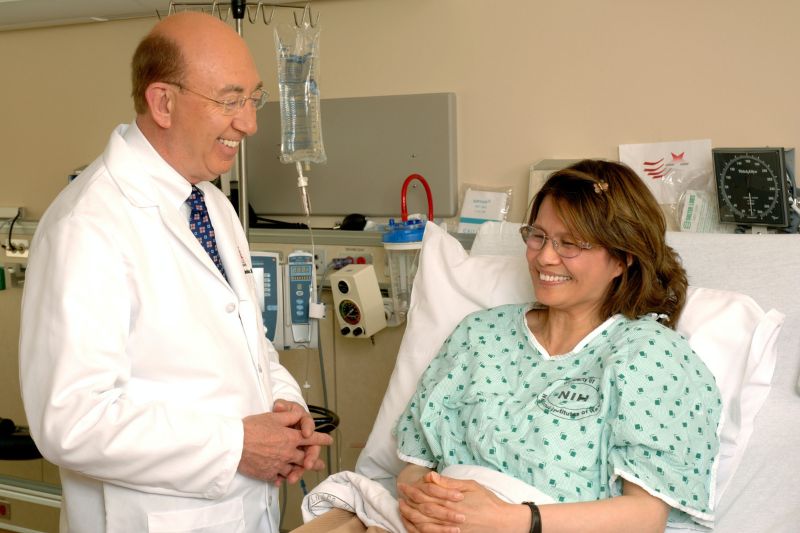Ways to Improve Health Outcomes Through Patient Education

Patient education has been defined as the process of imparting valuable medical knowledge and skills that can influence the patient to opt for healthier life choices and changes. It is very easy to maintain a strict schedule of medication and proper diet when the patient is admitted. However, it gets very difficult to monitor it once the patient gets discharged. This is where patient education comes in handy.
A patient who understands their condition well and knows about all the care protocols is more likely to use self-management techniques, strictly attend all follow-ups, and ask questions whenever needed. These people are more likely to follow through with all the care instructions. Active participation in managing their health can result in quicker recovery and lower healthcare costs in the future. This also simply means that the patient is fully satisfied with the care being provided by the healthcare workers. This in return can be a motivational factor for the healthcare providers to continuously improve and be better.
It may seem that the job of educating patients belongs to many roles: doctors, hospital admin, pharmacists, or even the patients themselves. But for a long time now, nurses have taken on a lot of responsibility when it comes to patient care. They most frequently visit the patient and interact with them the most. This is why patient education has become their duty.
To make it most effective, nurses now are opting for higher degrees and certifications that can polish their communication and leadership skills as well as bedside manners. These higher degrees like Doctor of Nursing Practice (DNP) teach evidence-based learning and practice using the latest technology and data.
Upon comparing nurse practitioners vs. DNPs, it becomes obvious how a DNP is more skilled in providing health education, better quality care, and offering assistance based on research and evidence.
Ways to Improve Patient Education
The trickiest part for healthcare workers is that their patients come from all walks of life. Communication is always difficult as patients usually have very little to no medical knowledge and healthcare workers tend to discuss everything in medical jargon. This only confuses the patients and makes educating them harder. But there are helpful ways you can improve the way you interact with your patients. We have listed down these strategies to make patient education more effective and meaningful for you and your patient.
1. Establish a relationship
Recent studies have shown that patients feel dissatisfied with the quality of care provided because of the cold and uninterested attitude of healthcare workers. We get it, doctors and nurses, in particular, have a lot to manage and do not have time for small talk and chit-chat. Unfortunately, this is exactly what they can do to ensure excellent patient care. Utilize your entire time slot and make an effort to get to know your patient. You can enquire about their routine, work, hobbies, family life, likes, and dislikes.
Patients who feel they are heard and cared for are known to respond much better to treatment plans and care. These non-medical chats can also relax your patient and they’d be more comfortable in sharing their concerns. You can also use this knowledge to understand your patient better and come up with different strategies of education based on their likes and dislikes. You must let your patient know that you are fully invested in their well-being.
2. Study your patient
Not every patient will communicate with the healthcare worker in one fixed way. There can be many barriers like language, level of formal education, and/or culture. The internet has added more to the trouble as vast amounts of misinformation make educating patients harder. The wrong information confuses and sometimes scares the patients more and they refuse to comply with the care protocols.
Healthcare workers must be understanding towards diversity and the differences and interact with the patients and their caretakers in layman language. It is also advisable to learn your patient and see how they learn. You can suggest different ways they can keep up with their care routines and let them choose what fits them best.
3. Use Educational Technology
Educational materials have become more accessible due to the advancement in technology. You must understand your patient’s strengths and limitations first to see what educational material can be beneficial. Patients with visual impairments will struggle to read pamphlets or visual aid. You can look up or customize the information in audio format for them. On the other hand, patients with hearing impairments would prefer reading material, though some patients would like to try a different approach to adapt to their impairment. With this, you must always have a better solution or something to offer, like an affordable price range of hearing aids that they can use to make them feel functional again.
You must put an effort into designing these information formats and make sure they are customized to meet the needs of your patients. It can also be beneficial to go through the material during your appointments and review important information and let them ask questions to clear out all confusion.
4. Use the “teach-back” method
There can be many factors why patients might be hesitant to accept they weren’t able to understand the instructions the healthcare workers told them. It can be that the news of their diagnosis left them in shock and they were unable to process anything after. Or simply, they were too ashamed to admit they didn’t understand anything.
The foolproof way to make sure the patient and their caretakers have fully grasped everything is to ask them to repeat everything you’ve just told them. You can carefully listen to what they’re saying and correct the wrong details or add the information they have forgotten. This is an excellent way of reinforcing.
5. Get the family on-board
Healthcare workers can only do their part when a patient is on the premises of a hospital/facility/clinic. They have little to no control over the healthcare routines of patients once they are discharged. This is why spouses, parents, children, relatives, and friends are valuable in this process. They provide the emotional and moral support their loved ones need in order to recover fully. They can make sure that the medication is being taken on time and the diet is exactly like what was suggested. They can also keep up with the schedule of follow-ups and appointments.
As a healthcare worker, it is always wise to include the caretakers during patient education. This is very important if your patient is differently-abled or a child. You must be calm and answer all their questions in detail. You should not hesitate to repeat important details so that it is understood well. It definitely can be challenging but it can be extremely rewarding as families and other social supports play a significant role in health care management.
Conclusion
Patients who have all the right information and are fully involved in their well-being are likely to stick to all treatment plans and follow every instruction. Their recovery process becomes easier and produces healthier outcomes. Healthcare workers must ensure that they provide the best care as well as patient-centered education so that this goal can be achieved. Patient education is not just a way to give the patient useful information. It has a positive impact on the patient’s health which in return boosts patient satisfaction in the healthcare workers and the overall industry. Promoting excellent patient-centered care and education can make our healthcare industry progress and flourish.






